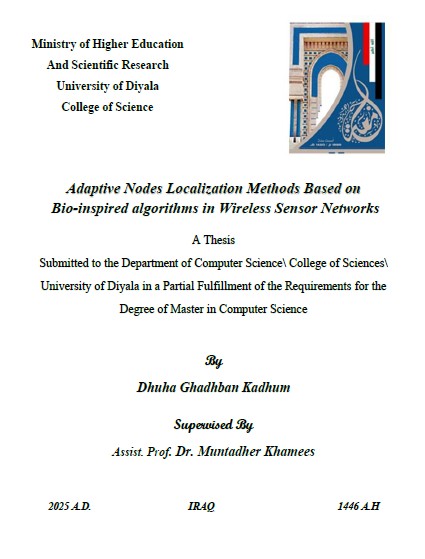Abstract
Wireless Sensor Networks (WSNs) are essential technologies for real-time monitoring in fields such as smart agriculture, environmental surveillance, and military systems. Localization the process of accurately determining the geographic positions of sensor devices within the network is critical because the reliability of collected data and the efficiency of information transmission depend directly on knowing where each node resides. However, localization is challenging in environments where traditional GPS cannot be used due to high energy consumption, prohibitive costs, inaccessibility of remote areas, and environmental interference that degrades measurement accuracy. To address these issues, this study evaluates six biologically-inspired metaheuristic algorithms Particle Swarm Optimization (PSO), Grey Wolf Optimizer (GWO), Crayfish Optimization Algorithm (COA), African Vultures Optimization Algorithm (AVOA), Flow Direction Algorithm (FDA), and Mountain Gazelle Optimizer (MGO) using three key criteria: error rate, number of successfully localized nodes, time required for localization. The results show that MGO consistently outperforms all other algorithms by achieving the highest number of localized nodes, the lowest localization error, and the fastest localization time, making it the best choice for high-precision, time-sensitive applications. PSO and GWO also perform well in terms of node coverage but incur slightly higher error rates and longer localization times than MGO. COA proves to be the slowest with the highest error, whereas FDA, although faster than COA, still exhibits relatively high error rates. AVOA offers a balanced trade-off between accuracy and speed but does not surpass MGO or PSO in any single metric. Furthermore, as network size increases, localization time rises and error decreases; nevertheless, MGO and PSO demonstrate superior scalability by handling larger networks more efficiently than COA and FDA. These findings guide practitioners in selecting the most appropriate localization algorithm based on specific requirements for accuracy, speed, or energy efficiency in wireless sensor network deployments.





